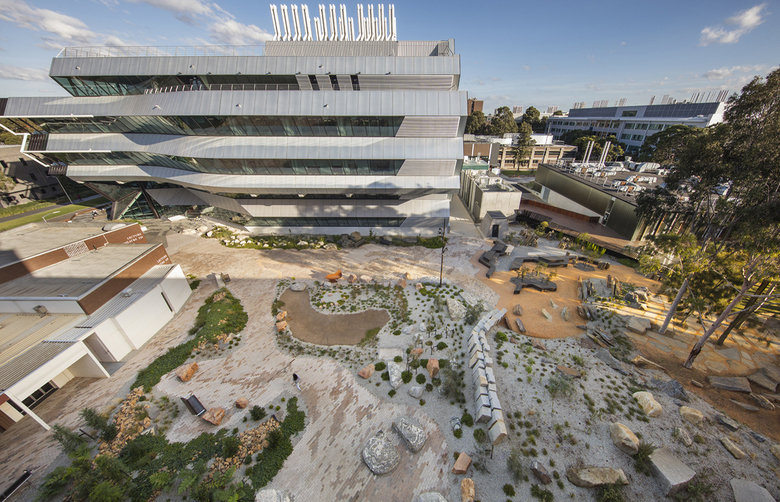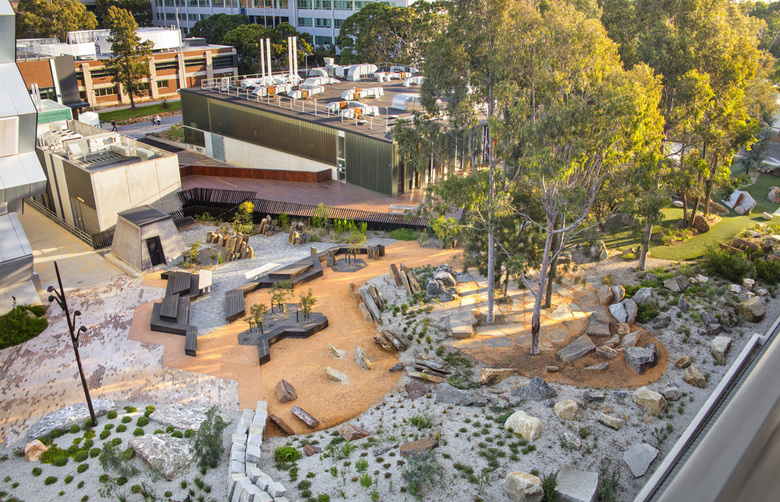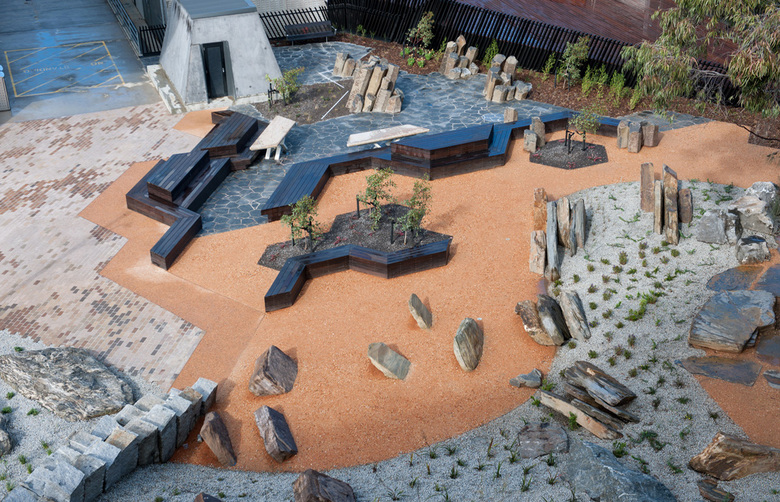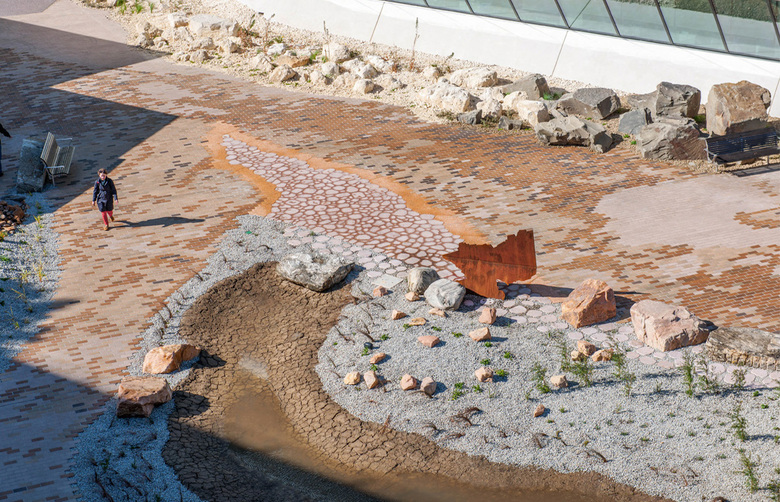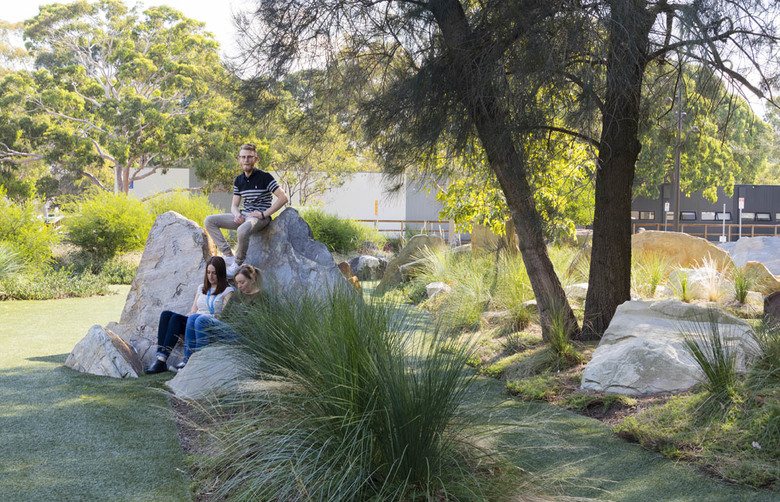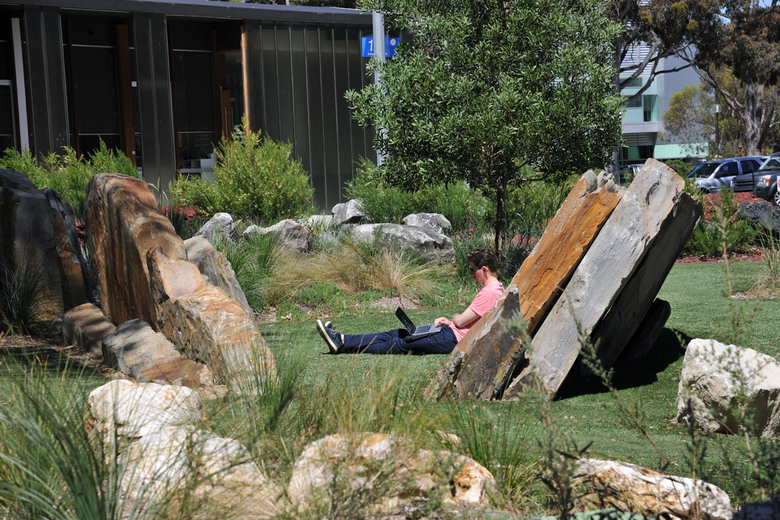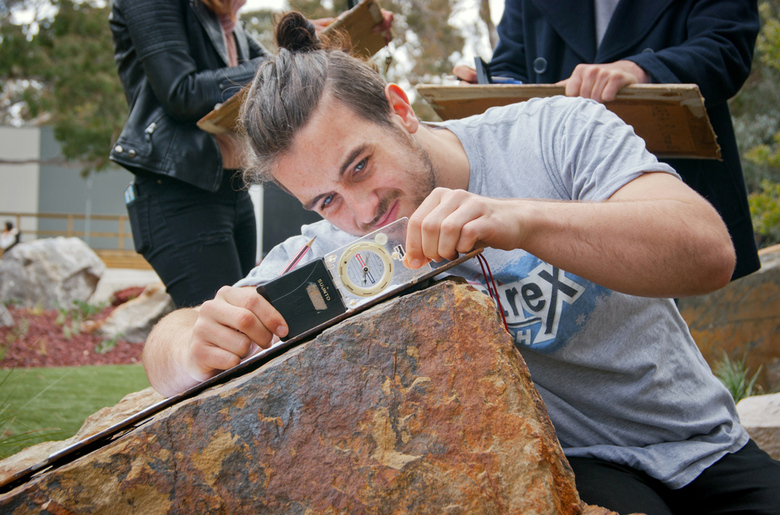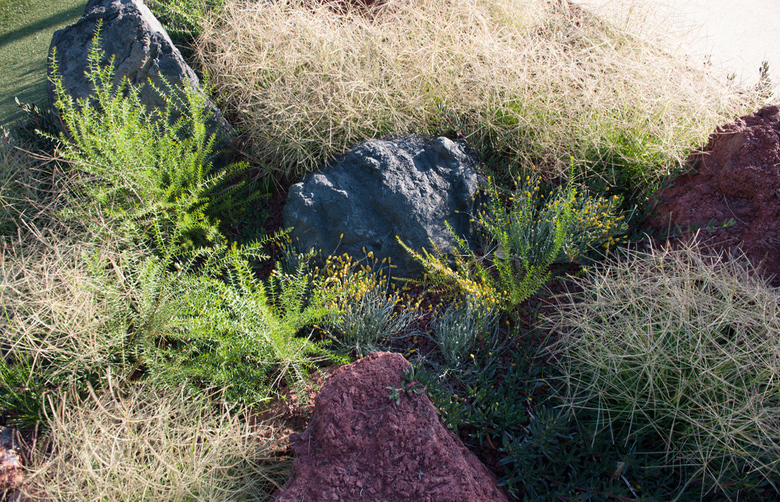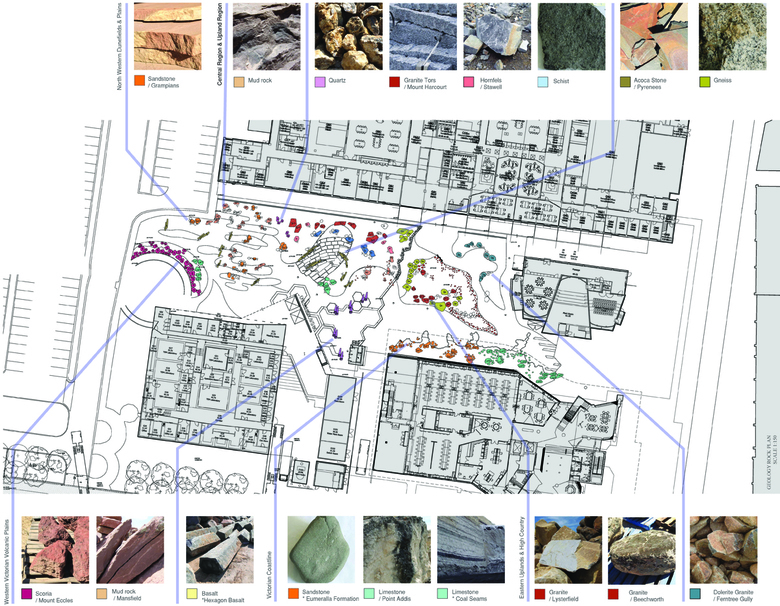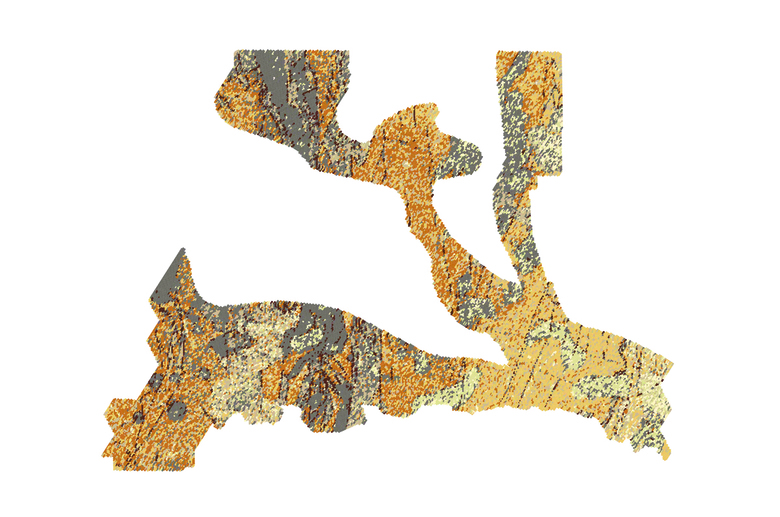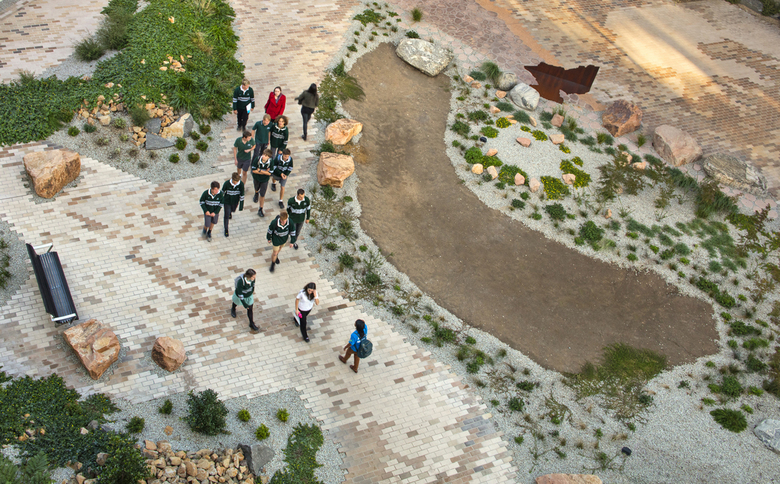Earth Sciences Garden Monash University
Clayton
- Landscape Architects
- Rush\Wright Associates
- Localização
- Wellington Rd, 3800 Clayton
- Ano
- 2016
- Cliente
- Monash University
- Project Management
- TSA Management
- Planting Design Collaborator
- Paul Thompson Landscaping
- Civil, Structural, Hydraulic and Electrical Engineer
- Wood and Grieve Engineers
- Lighting
- NDY Light
- Art
- Open Spatial Workshop
- Cost Planning
- Donald Cant Watts Corke
- Contractor
- Australian Native Landscape Constructions
- Stone Supply
- Pyrenees Quarries
Rush\Wright Associates were engaged as the Landscape Architect for the Earth Sciences Garden at Monash University.
This garden was created to showcase key features of the geology and geomorphology of Victoria and to establish an outdoor teaching laboratory for the study of Earth Sciences at Monash University in Australia. The garden integrates rigorous geological science with landscape architecture and has created a new form of system garden, where earth sciences, landscape design, and art together create a unique place of knowledge.
The design brief was developed with the staff of the School of Earth, Atmosphere & Environment, based on a sketch map of the ‘underlying’ geology to which all garden rock specimens needed to be aligned, and the desire for students to be able to map and understand the hidden forces involved in geological formations. Specific rock types of Victoria were to be included for detailed study. The new garden has set a precedent for the teaching of geological sciences and is used by all year groups, in particular for outdoor teaching with first year students.
The selection of rocks was arranged around tracings of Victoria’s geological and geographical regions. These include the rocky Gippsland and Otway coasts, the western volcanic plains, the sandy dune fields of the Wimmera Mallee region, the bend of the Yarra River, and the outline of Lake Tali Karng. Artificial landforms drain towards this central cracking clay pan, which holds water for short periods after rain, becoming the ‘lake’.
Each rock type is representative of different formations and geological age. The angle, orientation, and specific placement of approximately 500 rock specimens tell a local geological story, while the larger arrangements create a diverse series of landscape spaces. Feature rocks, stone pavements, gravels, mulches and plantings all echo the environments of specific regions of Victoria. Forms and shapes collide, creating difference and roughness at boundaries and edges. The effect is more ‘national park’ than curated display garden.
The planting design reflects the unique flora of each region on display and demonstrates the vital biological links between the characteristics of each regional rock type, and the ecological niches created by diverse geological processes over time.
It has been immediately recognized in the scientific community for its innovations in the teaching of geology, creating interest nationally and internationally.
Recipient of the following prestigious awards
2018 AILA National Landscape Architecture Awards – Civic Landscape
2016 Association for Learning Environments: Landscape/Outdoor Learning Area
2016 Think Brick Australia: Bruce Mackenzie Landscape Award Finalist
Projetos relacionados
Revista
-
WENG’s Factory / Co-Working Space
3 days ago
-
Reusing the Olympic Roof
1 week ago
-
The Boulevards of Los Angeles
1 week ago
-
Vessel to Reopen with Safety Netting
1 week ago
